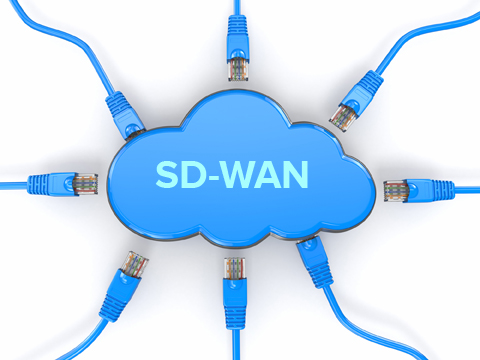
—loud computing concept. Rj-45 plugs on white background. 3d
SD-WAN is a term you may have heard bandied about recently, but what exactly is it? SD-WAN stands for software-defined wide area networking and describes a technology category that has been gaining popularity due to its ability to improve the performance and reliability of corporate networks while reducing costs.
In this blog post, we will look at what SD-WAN is, how it works, and some of the benefits it can offer businesses. Stay tuned!
What Is Software-Defined WAN?
SD-WAN is a type of wide area network (WAN) that uses software to provide a more efficient, scalable, and cost-effective way to connect branch offices to each other and the cloud.
SD-WAN uses software-based network virtualization to abstract the underlying physical infrastructure and makes it possible to decouple the control plane from the data plane. This separation of concerns allows for greater flexibility, agility, and scalability in how the WAN is deployed and managed.
SD-WAN also can dynamically route traffic across multiple links to optimize performance and ensure high availability. Benefits of SD-WAN include reduced network complexity, lower costs, improved performance, and increased agility.
What Does SD-WAN Stand For?
SD-WAN stands for software-defined networking in a wide area network. It’s a leading technology for connecting enterprise locations with each other and to the cloud.
How SD-WAN Works
To connect locations, it uses multiple links simultaneously, including internet, private MPLS, or Ethernet connections.
The beauty of SD-WAN is its flexibility to intelligently route traffic over the most appropriate link based on real-time conditions and user-defined policies. It also offers dynamic path selection, a better quality of service, increased bandwidth, and centralised management, which helps you get the most out of your WAN infrastructure.
One main reason enterprises are switching to SD-WAN is because of how much it can save on WAN costs. Traditionally, WANs have been built using private MPLS circuits, which can be pretty expensive. With SD-WAN, you can use more affordable broadband internet links while maintaining high levels of security and performance.
Another significant benefit of SD-WAN is how much easier it is to manage compared to traditional WANs. With traditional WANs, each router needs to be configured individually, which can be time-consuming and prone to errors. With SD-WAN, all routing and configuration are done.

Why Is SD-WAN so Popular?
ŚD-WAN has quickly become one of the most popular networking solutions for businesses of all sizes. And it’s no wonder why. SD-WAN offers many advantages over traditional WAN solutions, including easily connecting geographically dispersed locations, increased bandwidth and performance, and more.
But perhaps the real power of SD-WAN lies in its flexibility. SD-WAN solutions can be customized to fit any business’s specific needs, whether a small office with a handful of employees or a large enterprise with hundreds of locations.
As a result, SD-WAN is quickly becoming the go-to solution for businesses looking to improve their network performance.
Benefits of SD-WAN
SD-WAN, or software-defined wide area network, is a next-generation WAN technology that enables enterprises to connect users and branch offices to the cloud securely. SD-WAN solutions are designed to provide the flexibility, agility, and scalability needed to support the ever-growing demands of the modern enterprise.
The most significant advantage of SD-WAN is that it reduces the dependence on MPLS, or multiprotocol label switching. MPLS has been the traditional method of connecting enterprise networks, but it is notoriously inflexible and expensive.
SD-WAN provides a more cost-effective and flexible alternative to MPLS, and it is quickly gaining traction within the enterprise market. In addition to reducing costs, SD-WAN offers several other benefits, including improved performance, increased security, and simplified management.
As enterprises migrate to the cloud, SD-WAN is poised to become the de facto standard for WAN connectivity.
Types of SD-WAN
There are three main types of SDWAN: Overlay SD-WAN, Hybrid SD-WAN, and Cloud-delivered SD-WAN.
Overlay SD-WAN refers to a solution deployed on top of an existing network. It is typically used by enterprises that have a large number of locations and need to be able to connect all of them via a single platform.
Hybrid SD-WAN is a solution that combines elements of both overlay and underlay SD-WAN. It allows enterprises to connect locations using their existing network infrastructure or a dedicated SDWAN connection.
Cloud-delivered SDWAN is a solution delivered as a service from the cloud. It offers many of the same benefits as other types of SD-WAN but can be deployed more quickly and easily. Cloud-delivered SD-WAN is often used by small and medium-sized businesses that do not have the resources to deploy their on-premises solution.

Key Takeaway
SD-WAN is a term you may have heard bandied about recently, but what does it mean? SD-WAN stands for software-defined wide area networking. It is a technology that has gained popularity recently as businesses look for ways to make their networks more agile and efficient.
So, if you’re looking for a way to improve your business network, SD-WAN may be the solution you’re looking for.







